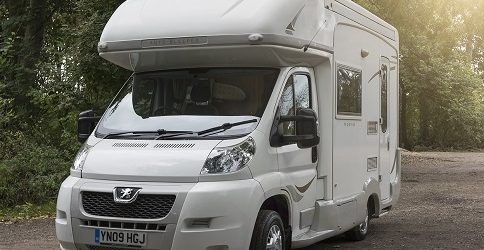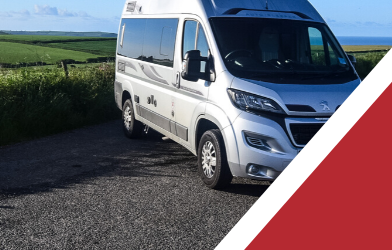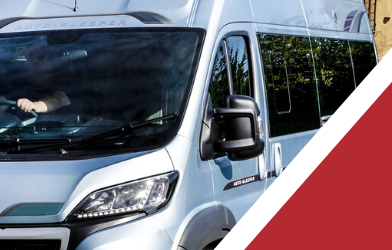Although winter might bring some days of unexpected sunshine, this is probably the time of year when you are thinking about putting your motorhome into some form of storage. The days are getting noticeably shorter and the clocks will be going back anytime soon, so you might be using your motorhome less often as the weather closes in.
So that your motorhome stays in peak condition, protected from the elements and other wear and tear, here are some tips and suggestions as you prepare the vehicle for winter – so that it is ready to use come springtime.
As you prepare to winterise your motorhome, bear in mind that your motorhome insurance policy may spell out certain obligations as to what you need to do when storing your motorhome. Some may also offer discounts if you store your motorhome at a recognised storage site – speak to your insurer for clarification.
Insurance considerations, for the moment, to one side, let’s consider the main areas of focus before you store your motorhome away for winter:
Storage
One of the great things about a motorhome, of course, is its versatility and the way it is more or less always ready to get out on the road for excursions even during the winter months. Depending on your lifestyle and the type of motorhome you own, however, you might prefer to think in terms of more secure, off-road storage.
The Caravan and Motorhome Club has 3,000 such pitches at various secure storage sites around the country and many of these are also accredited by the Caravan Storage Site Owners’ Association (CaSSOA) – where the level of security and safe-keeping might even earn you a discount on your motorhome insurance premiums.
Preparation
Whether you decide to winterise your motorhome by putting it into storage or keep it on your driveway ready for sunnier winter interludes, now is the time of year to give it some pre-winter care and maintenance:
- wash and clean off the summer’s dust and debris before giving the whole vehicle a good wax – to provide that extra layer of protection that helps preserve the bodywork’s sheen;
- remember that your motorhome needs to “breathe” when it’s not in use – air vents need to be kept open to prevent damp and mould – so avoid covering the vehicle with any type of tarpaulin;
- lubricate mechanical parts on the exterior of your motorhome, including the door hinges – this will also help repel moisture and reduce corrosion;
- check the tyre pressures and inflate them to the recommended working pressure, but remember that the rubber is going to deteriorate faster if the weight of the vehicle is kept on the same tread for too long – better to raise the vehicle on axle-stands to take the weight off the tyres;
- carefully check the state of all seals around doors and windows, making sure that the rubber has not perished or become damaged – this is one of the most common sources of ingress of water, which may quickly cause very costly, longer-term damage; and
- if there is evidence of any water ingress, make sure to trace and remedy the problem.
Mechanical
Although a full mechanical service may wait until nearer the time you next use it, prepare the motorhome for its period of storage by changing the oil and consider adding a fuel storage stabiliser (to combat corrosion and prevent the build-up of gum and varnish deposits).
Here at Derby Motorhomes, we advise against the temptation to turn over the engine by starting it too often, since this is likely to circulate the acids and sludge that accumulate in the system. If you do start it, however, make sure to run it for at least half an hour.
An altogether better solution is simply to disconnect and remove the battery, charging it regularly – perhaps with a solar trickle-charger, as advertised by suppliers Maplin.
Interior
Give the interior a thorough cleaning, too – not simply for appearances’ sake, but also to help prevent a build-up of damp or to deter pests. Food and crumbs that have accumulated during summer outings present an irresistible treat to mice and other pests during the winter months. So, remove all food from the fridge, clean the inside thoroughly and leave the door ajar.
A quick checklist of further good housekeeping points for the interior of your motorhome includes:
- draining down all water systems and blowing compressed air through the pipes to ensure that every last drop has been expelled;
- this is an essential precaution, since any water that freezes in cold weather may burst not only the pipes and storage tanks but also the fittings;
- disconnect and remove the auxiliary battery or batteries for storage in a dry place where they will not freeze and remember to keep them charged since cold weather shortens their effective working life;
- disconnect and remove any gas (butane or propane) cylinders and store in a safe and dry place;
- take out all the bedding and soft furnishings, wash or dry clean it and store it indoors at home.
Ventilation
One of the trickier issues is maintaining ventilation – to discourage the spread of damp and mould – whilst at the same time weather-proofing those openings to prevent insects and other pests from getting in.
Larger ventilation portals, for example, might be covered up with plastic or polythene which is simply taped into place.
Awnings
Ensure that any awnings have been thoroughly dried so that they can be rolled up and put away until they are needed in the spring or summer.
Checks
Whether it is sitting on the driveway at home, or in more permanent storage, visit your motorhome from time to time and, if possible, take it out for a drive, to help even out wear on the tyres that have been bearing the weight of the vehicle for all this time.
Regularly check tyre pressures, oil, brake, and clutch fluids.
Ready for the next season
A little care now, as you winterise your motorhome, may help to ensure it is ready for another season of faithful service come the springtime.




